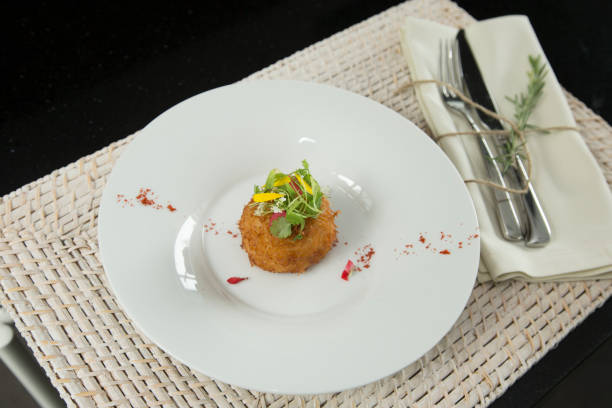Food styling and presentation are a way of making your delicious food look more visually appealing.
It improves the dining experience and makes others excited about what you will bring to the table. It not only tantalizes your tastebuds but also your eyes.
It showcases your culinary skills and even if you are a new cook, professional chef, food blogger, home cook, or just want to show some creativity with your meal, you can use different food styling and presentation.
In this blog, you will learn how to elevate your plate by learning the art of food styling and presentation.
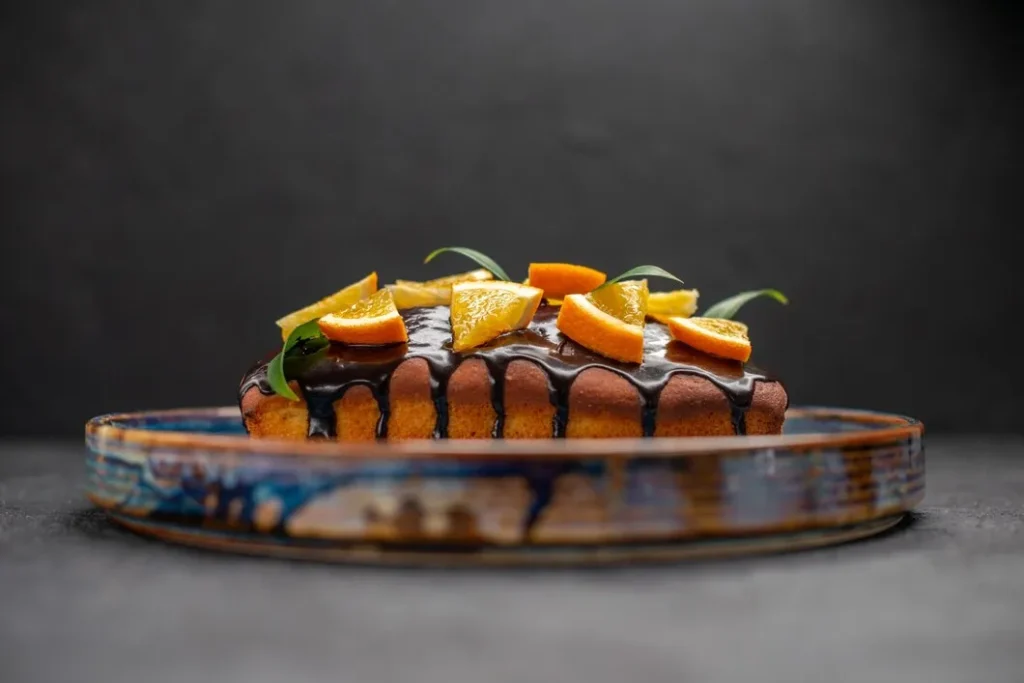
Importance Of Food Presentation
It is rightly said that we eat with our eyes first. Food styling and presentations make the food visually good and this appeal impacts your taste perception.
It creates a good first impression and enhances the expectations regarding the flavour of the food. It offers a great and memorable dining experience.
The way you style and present the food speaks volumes about your presentation and shows the level of care you have put into it. Food styling also increases your desire to eat.
Basic Principles Of Food Styling
1) Colour contrast and balance
Use a variety of colours to enhance the visual appeal of your dish and contrast them to create balanced compositions. You can use vibrant red tomatoes, fresh green herbs, and other vegetables to balance the colour.
But don’t use bold colours together as it can be overwhelming for the person for whom you are serving the dish. These colours contrast are used to get crafty with the edible art to make dishes vibrant and appealing.
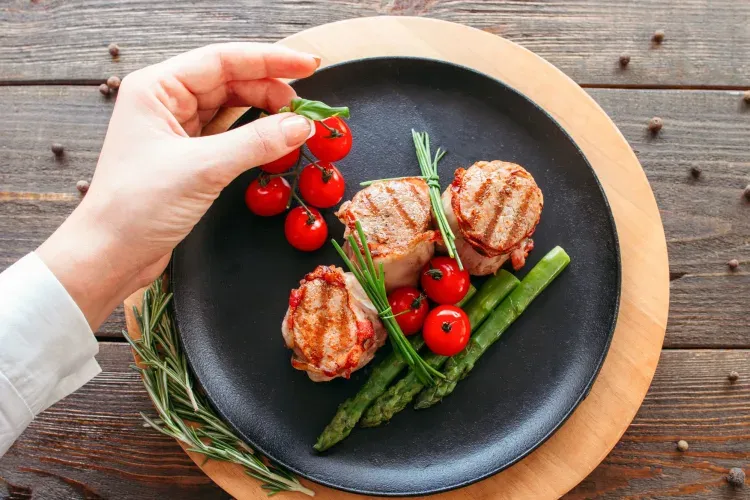
2) Texture and shape
To enhance the dish appeal combine different textures and use a variety of shapes such as squares and circles for a modern look and organic shapes for a rustic look.
Textures add complexity and pleasure to the food. You can use crunchy elements such as crispy caramelized crust, bacon, etc with creamy components such as sauces.

3) Plate composition
Plate composition has various techniques that you can use to create a balanced composition.
Rule of thirds: The rule of thirds prescribes putting the main elements either on the left or right but not at the center.
Negative space: Just try to keep your design simple by leaving some empty space on the plate. Don’t clutter all the items as this will make each element stand out.
View your plate as a clock: Another technique is to view your plate as a clock. Keep the proteins between 3 and 9, carbohydrates between 9-12, and vegetables between 12-3.
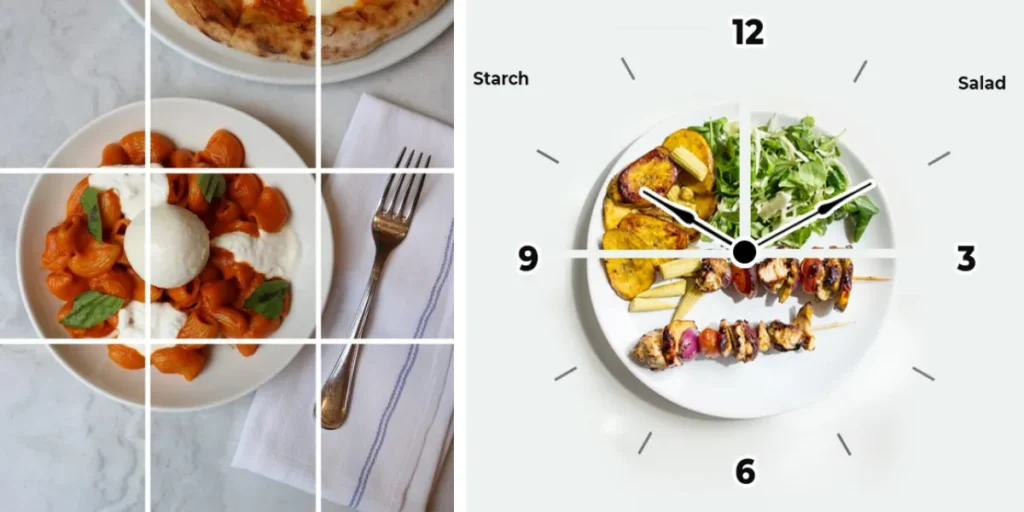
4) Garnishing
For garnishing, you can use fresh herbs, edible flowers, and coriander leaves to add colour and elegance to your dish. Also, make sure that they complement your dish flavours.
Always use edible garnishes instead of unappetizing garnishes such as raw herbs, large chunks of citrus, any item with a strong odor, and those that take a long time to apply. Place them thoughtfully and not in one corner.
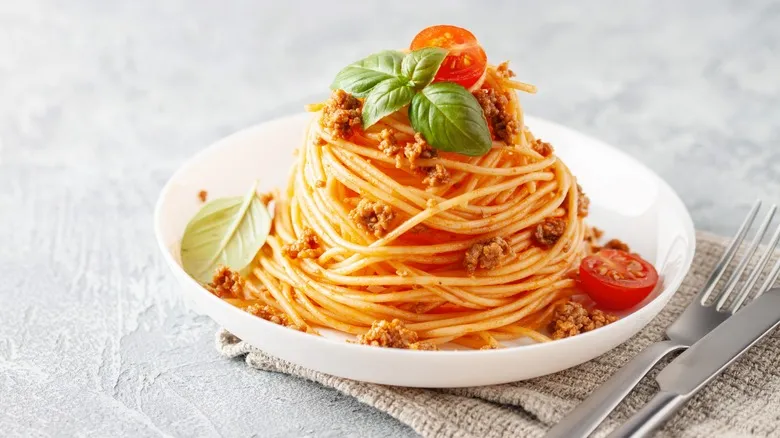
Plating Styles
1) Classic Plating
Classic plating is a traditional yet elegant style of plating. It elegantly presents food while showing balanced portions and symmetry.
This kind of plating allows you to see all the elements vividly on the plate. It is suitable for formal dining.
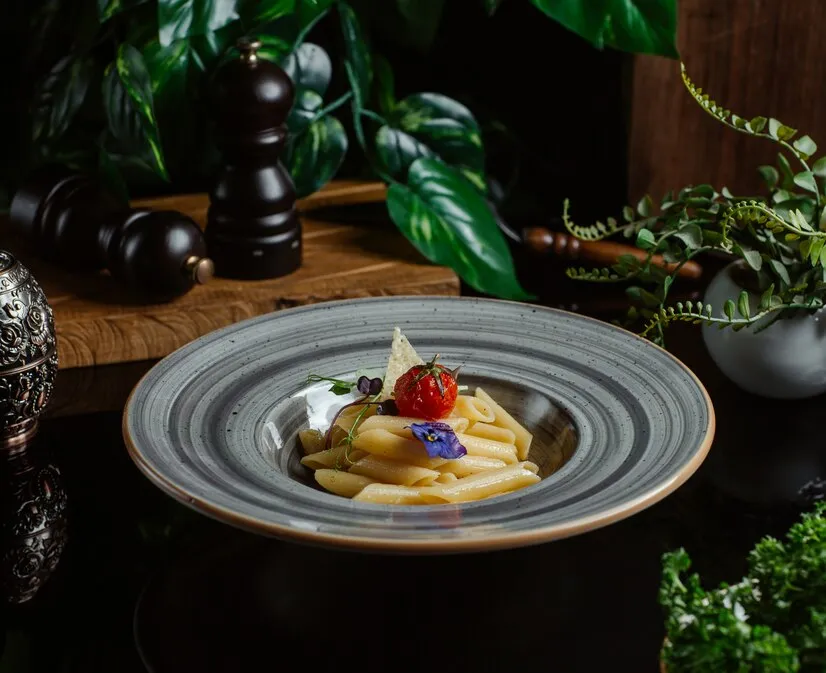
2) Rustic Plating
Rustic plating gives an organic and authentic feeling as it showcases all the ingredients in natural and hearty presentations.
It is suitable for casual dining as compared to classic plating.
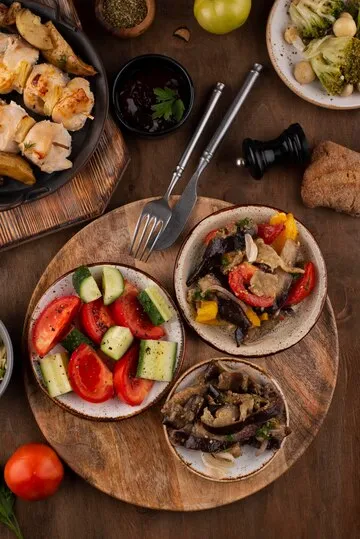
3) Minimalist Plating
Minimalist plating uses simplicity and thoughtfully arranges a few elements, creating a big impact.
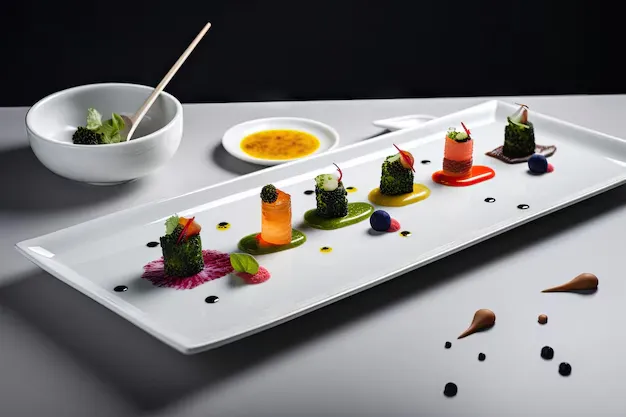
4) Artistic Plating
Artistic plating uses artistic techniques as it is a highly creative and unconventional plating style. This makes a delicious dish more visually appealing.

5) Free-form Plating
Free-form plating also allows you to show your creativity and use various cooking methods such as scattering or stacking to make dishes more eye-catching. Through this style, you can express your artistic vision.
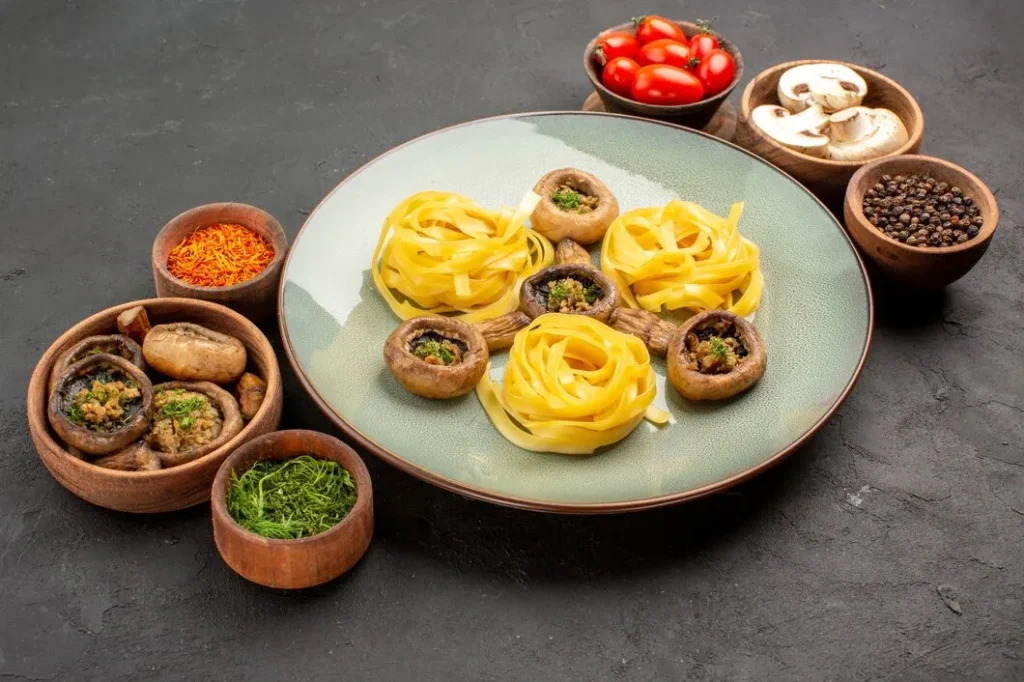
6) Landscape Plating
Landscape painting, as the name suggests, shows the elements of natural landscapes. This style of plating requires creativity and an eye for detail.
You present the food in a way that gives it a natural look while enhancing its flavour and texture.
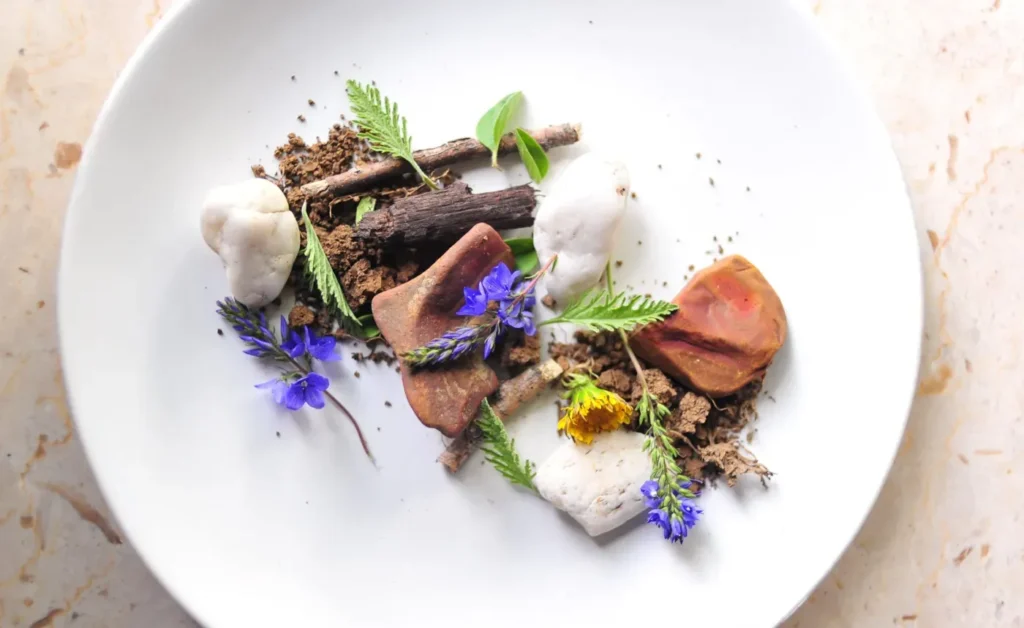
7) Bathing Technique
The bathing technique presents the food or main dish immersed in sauce or broth. This makes your dish more flavourful and eye-catching. It enhances the texture, flavour, and appearance of your dish.
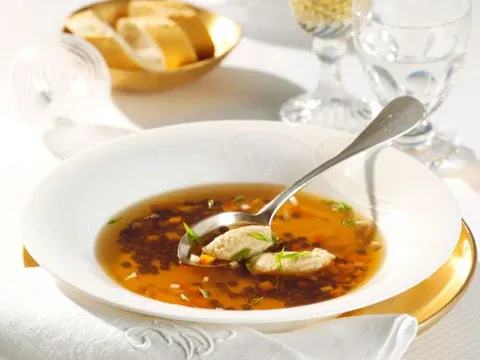
Step-By-Step Food Styling Techniques
You can use these steps in food styling techniques to make your dish more visually appealing and flavourful.
1) Layering
First, start with the base by spreading sauce or puree across the plate.
Then add the main protein on top and then the vegetables or sides. This will add height to your dish while also forming a great foundation.

2) Height and volume
After that, you can give height to your dish by stacking ingredients, fluffing up salads, or leaning them against each other.
This will not only give the dish the height and volume but will also make it more lively and interesting.
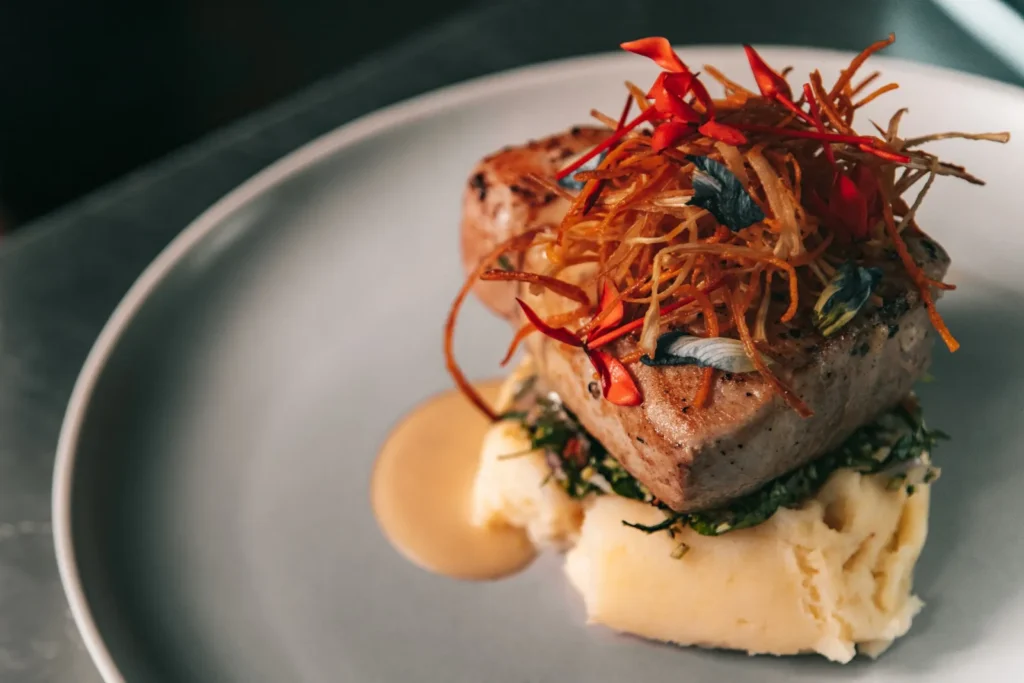
3) Sauce Application
You can apply sauce by using a spoon or squeezing the sauce from the bottle. This will allow you to create dots, lines, or other patterns easily and in a controlled manner.
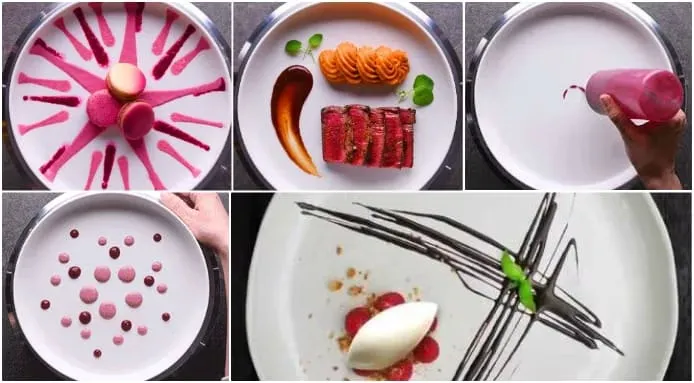
4) Edible flowers and herbs
Thoughtfully use fresh edible flowers and herbs to give your dish a vibrant appearance and flavour
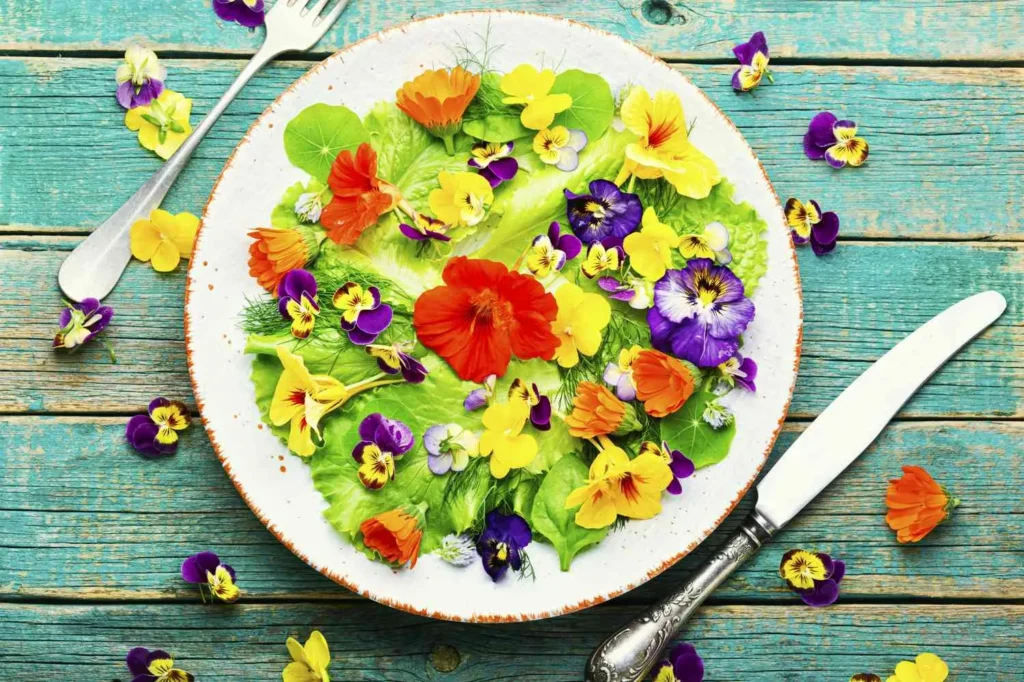
5) Final touches
Lastly, wipe the plate edges to give it a clean finish. You can also add olive oil for more shine or sea salt for more texture and flavour.
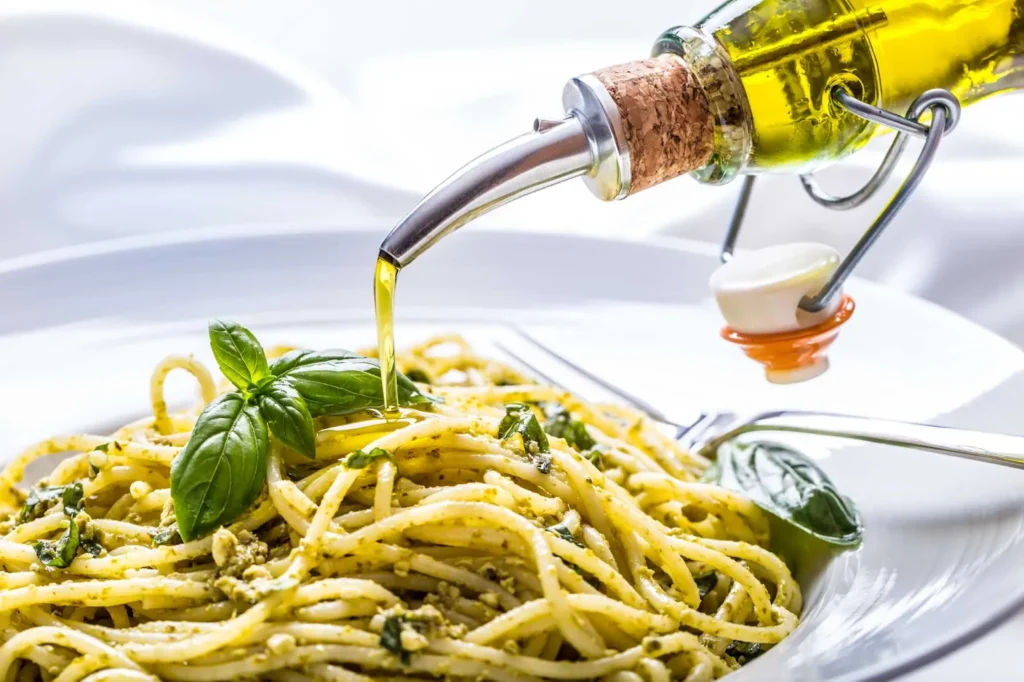
Tools For Artful Food Styling And Presentation
You can use these tools for food styling and presentation to nicely place the ingredients and showcase your creativity.
| Tools | Their Use |
| Tweezers | For placing garnishes and delicate ingredients precisely |
| Squeeze bottles | Allows you to create various designs and patterns with sauce |
| Molds and rings | To form neat and consistent shapes and layers of food |
| Brush | Useful to paint with sauces on plate |
| Microplane and zester | To delicately shave zest, cheese, or chocolate |
Conclusion
You can make your dish more visually appealing by learning the art of food styling and presentation. You can use different plating styles and styling techniques to enhance its appearance.
There are various tools and techniques that you can utilize to create different patterns and shapes and to place garnishes precisely.
You can even use various colours, textures, and plating composition techniques as it will make your dish eye-catching and more flavourful.
Just avoid cluttering your plate and arrange each element to show your creativity and make your dish more interesting. So, all these principles, tools, and techniques will help you to enhance your food styling and presentation.
Frequently Asked Questions
Q1 What is food presentation and styling?
Ans Food presentation and styling encompasses all elements of the dish, including plate design, food arrangement, food decoration, and table setting.
Q2 What are the best plates for food presentation?
Ans White plates are the best plates for food presentation as it shows the food’s vibrant colors, making it more visually appealing. Many use white plates like a blank canvas and various colour contrasts to showcase their creativity and artistic vision.
Q3 Does food presentation affect taste?
Ans Food presentation can affect our perception of taste and overall enjoyment of a meal.
